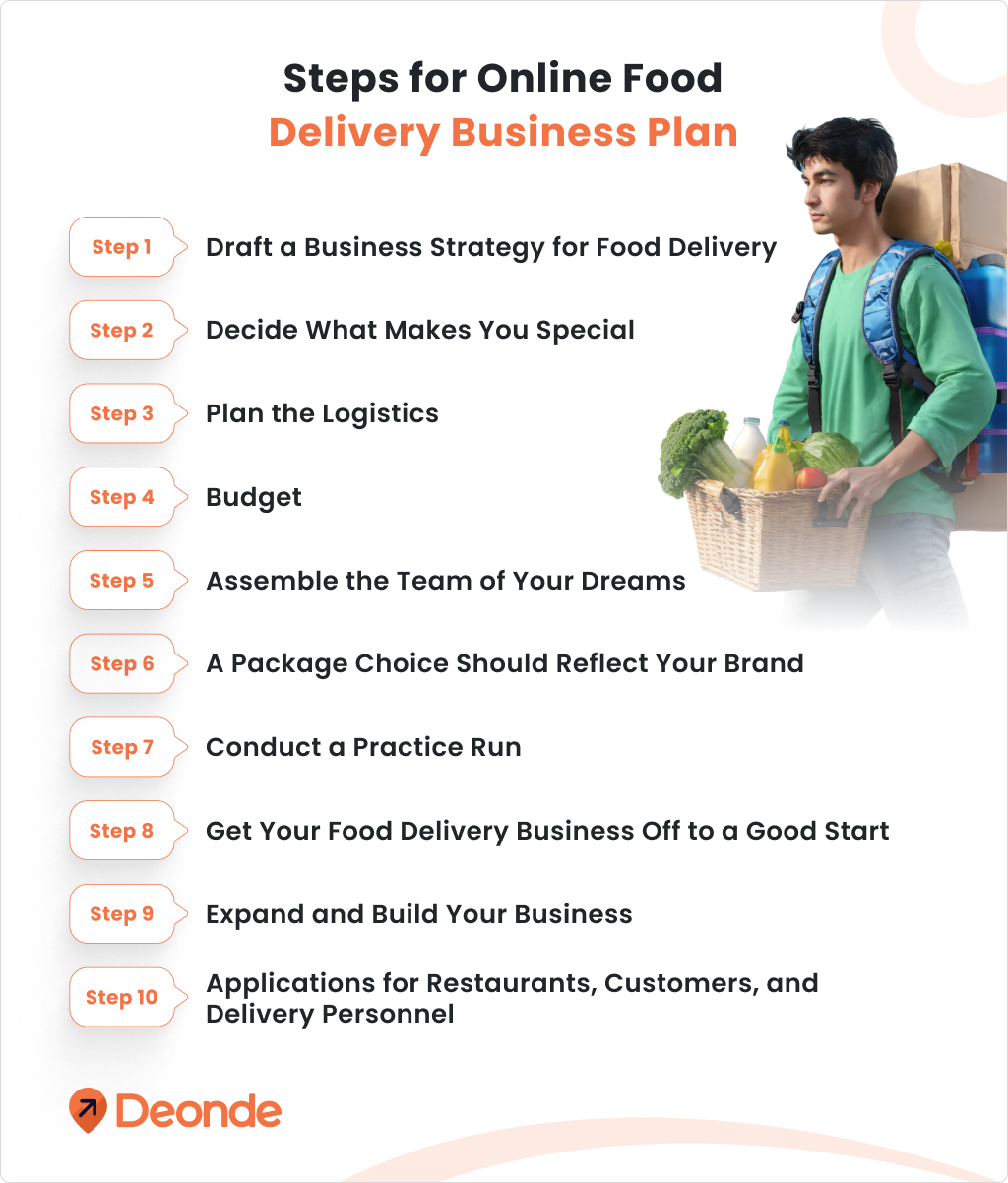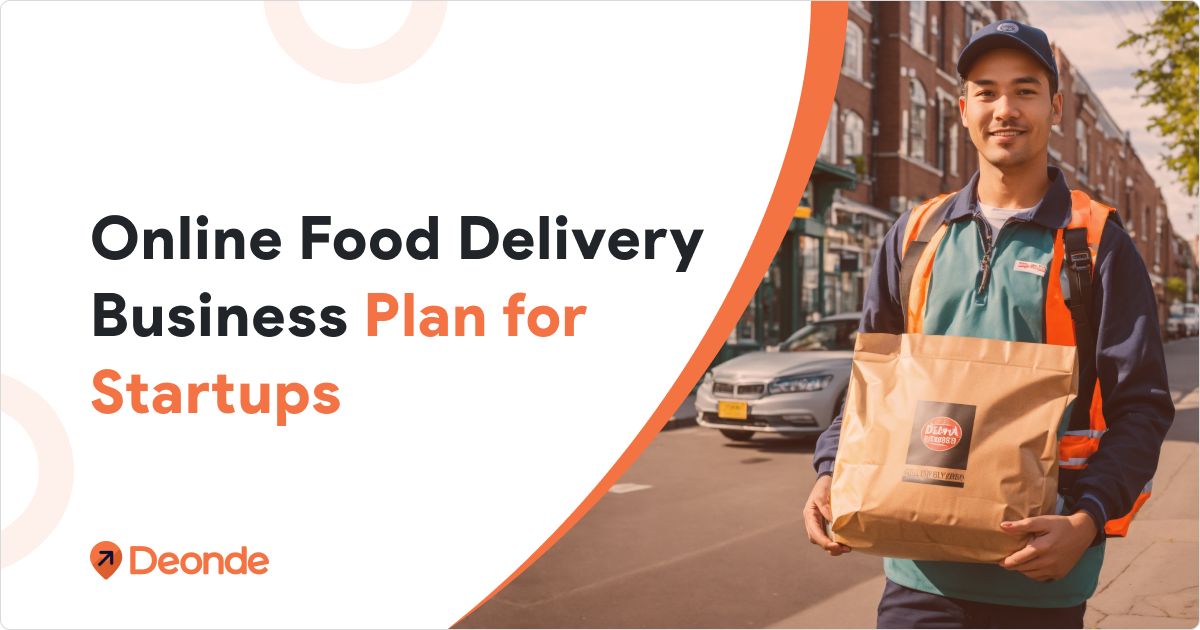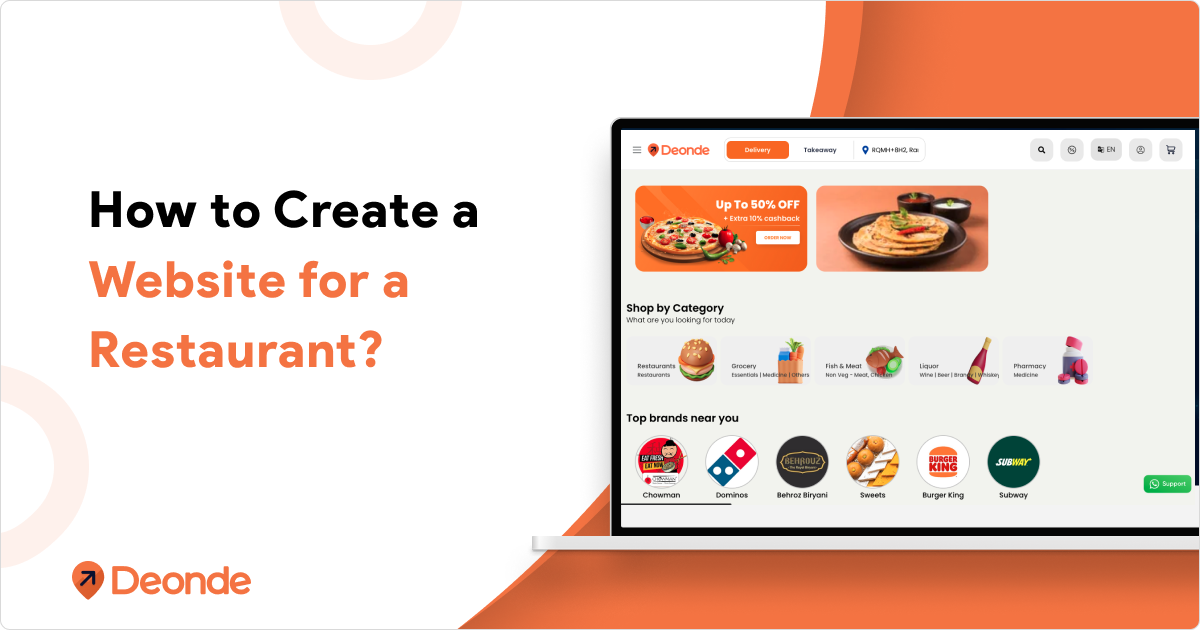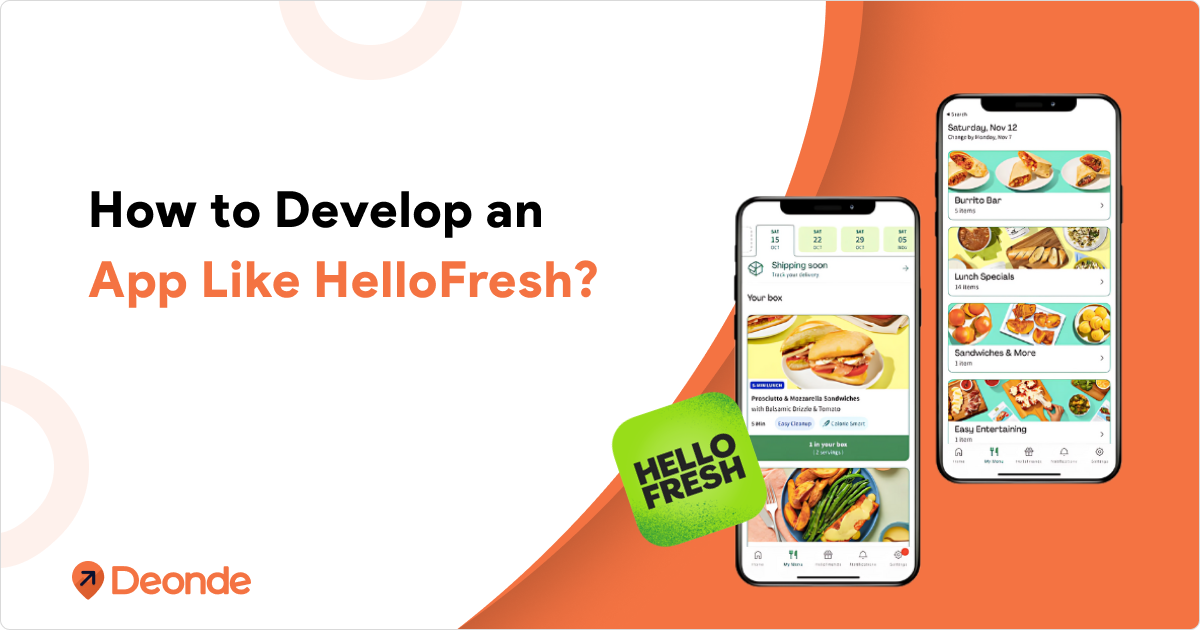The customer base has evolved. Their eating patterns, food distribution systems, and food demand have all changed. These stats show how to Increase client retention rates and offer timely delivery; most meals are delivered to homes. There were many orders on Friday, Saturday, and Sunday. To overcome these difficulties, you must develop a comprehensive Online Food Delivery Business Plan for Startups. The strategy is much more than just a blueprint or executive summary.
The following are some ways that a well-written, effective online food delivery business strategy may help you:
- Reveals information about your industry, primary competitors, target market, food delivery platforms, and trends.
- The food sector should analyze SWOT to learn more about its opportunities, threats, and strong points.
- It is a benchmark for managing a business and choosing the appropriate product price.
- You could learn about the need for additional team members, resources, and equipment to help you achieve any key aims or corporate goals.
- Supports the food industry’s financial accounts, cash flow statements, revenue models, competitive tactics, and investment strategy.
Pay close attention to these critical figures before joining the food delivery sector.
The market for Internet food delivery has quadrupled in size since 2017. 57% of millennials favor having a restaurant deliver their food. Customers are willing to pay more for services with faster delivery in 33% of cases. According to 60% of restaurant owners & operators, offering delivery increases income. Restaurant sales volume grew from 10% to 20% due to working with outside delivery companies. Due to the easy and pleasant experience, 70% of consumers prefer to buy deliveries online. The office food delivery market’s “ghost kitchens” or “cloud kitchens” segment will be worth $1 trillion by 2030.
Steps for Online Food Delivery Business Plan

Step 1: Draft a Business Strategy for Food Delivery
Craft a food delivery startup business plan before menu creation. A solid blueprint ensures success and guides your special dish development. These are the essential components for creating a successful food delivery business plan; flavor or changes may always be added when you have an idea.
Step 2: Decide What Makes You Special
Choose a unique approach to help your business stand out. Local Roots For instance, the farm delivery service in New York City only provides food from “hyper-local” farms, which are two hours from the city. Researching the market is necessary. Use meal delivery services to get takeout from local restaurants and to investigate your rivals. Find out where they fall short so you may make up for it by offering a particular dish, quicker service, or a different cuisine.
Step 3: Plan the Logistics
A significant aspect of running a food delivery business is logistical management. This step will tell you how to start a food delivery business. Take the following steps right away:
- Find a kitchen: Your local laws must allow you to make meals in your home to hire a commissary or commercial kitchen. If you’re adding restaurant delivery to an already-existing eating establishment, reserve a particular kitchen area for delivery orders. You’ll require a spot where delivery personnel may take orders without interfering with dine-in activities.
- Make a map of your neighbourhood: Start subtly. You can always increase once you know how long deliveries take and how many orders your drivers can handle simultaneously. If you’re starting a weekly subscription service, like a meal prep or grocery delivery business, consider dividing your territory into manageable zones. For instance, Tomato Mountain Farm distributes to each zone on a specific day of the week. Consequently, deliveries are more efficient and have a lower carbon footprint.
See Also: Why is White Label Food Delivery App Ideal for your Business?
- Select a fleet: You can brand or wrap the outside if you have your delivery truck or vehicles. Owning a car also makes paying for repairs and gas easier. But the expense is significant. You can use your driver’s car if you cannot acquire or rent a delivery vehicle immediately. To ensure that the food is transported securely, the only thing left to do is outfit them with accessories like insulated bags or ice packs.
- Know when reverse logistics are necessary: Reverse logistics collects customer items and transports them to your location or elsewhere. Meal delivery services like Oco Meals employ reverse logistics to gather recycled food containers.
Investigate competitors in the industry for logistical insights, take note of their processes, take advantage of their flaws, look for mentorship from seasoned food entrepreneurs, and consult our food warehousing guide for storage ideas.
Step 4: Budget
Once you understand your market and logistical requirements, budgeting, income, and demand forecasting are necessary. Using your expected earnings as a guide, calculate your revenue. Projection aids risk assessment, break-even analysis, and upfront expense tolerance. Sum expenses: supplies, vehicles, upfront and 3-year costs, petrol, tolls, maintenance, licenses, payroll. Comprehensive financial planning is crucial.
Maintain financial records and monitor billing cycles. If 30-day expenditures exceed 30-day revenue, cash flow becomes an issue. To relieve concerns about cash flow, think about paying for meals weekly in advance for three months.
Step 5: Assemble the Team of Your Dreams
The key to starting a successful food delivery company is assembling a committed staff that shares your goals. Put happy employees first since they produce more effectively and will help you maintain profitability during the break-even phase. Choose delivery workers with strong customer service backgrounds crucial for effective client interactions. Communication abilities are more valuable than map-reading skills when using route optimization technologies. Drivers frequently represent your company in person, so choosing ones who can make an excellent first impression is crucial.
Step 6: A Package Choice Should Reflect Your Brand
If the packaging and style of your deliveries match your brand, it could help you get more return customers. Suppose your market analysis showed an absence of sustainably produced food that could be supplied locally. You start a delivery service for meal packages made with organic and sustainable ingredients. Choose recyclable or biodegradable cartons because they align with your business’s positioning and marketing strategies.
Even if you’re not building an eco-focused business, most clients prefer to place orders from delivery services that utilize recyclable or biodegradable packaging. Even the containers you use to transport food should contribute to building a recognizable brand for your business.

Step 7: Conduct a Practice Run
Start your business with a modest clientele so your crew may practice and work out any issues in your physical operation.
Observe how long it takes the drivers to deliver to different places and how much time they require at each stop. Utilize the knowledge you gain from conducting a test run to enhance your routing and scheduling. The more detailed information you have, the better your capacity plan will be, and the easier it will be to scale operations when demand rises. Ask potential customers for feedback on the costs, features, menu options, and services they value throughout your trial run.
Step 8: Get Your Food Delivery Business Off to a Good Start
Want to know how to start a food delivery business? The best way is to initially spend less money on marketing but get the word out. According to Nielsen’s Global New Product Innovation Report, 50%+ % of consumers discover new goods via friends and family. Make it easier for happy customers to tell their friends about your company since word-of-mouth promotion is a powerful tool. Include a “refer a friend” button on your website, app, and emails. You may inspire your target market to tell their friends about your business by offering a referral discount or rewards program.
Leverage social media for engagement. Pose quick, thought-provoking questions to spark conversations and excitement among your audience. Consider the case when you provide Mexican food. “Taco Tuesday or Torta Tuesday? ” or something like that. I can only display text; I cannot display photos. Which one do you prefer? Increased visibility due to possibilities for comments. Attract a larger audience. Cooperate with regional influencers to effectively promote your business.
Step 9: Expand and Build Your Business
An app will be your most valuable weapon in this conflict. Therefore, developing the best mobile app for online or home food delivery business plans should be one of your top priorities. However, the mobile app paradigm for online food delivery differs substantially from others. Your food delivery app business plan must outline three distinct versions of your organization.
Step 10: Applications for Restaurants, Customers, and Delivery Personnel
As well as a dashboard for management for the principal business owners. Another proposal for a food delivery solution is being developed through Cloud Kitchen. It enables individuals with modest Food Delivery Business Ideas to prepare meals at home and assist neighborhood residents.
Creating mobile apps with cloud integration helps giant corporations access the largest audience, as it helps small businesses. Thanks to the development of cloud kitchen applications, you can efficiently oversee the operations of your restaurant.
Conclusion
Newcomers to the food industry face time-consuming planning key components explored for drafting a robust business strategy. Understand industry stats before applying business principles; grasp online resources’ importance for running a profitable food delivery venture despite using templates. Newcomers to the food industry face time-consuming planning. Key components explored for drafting a robust business strategy. Understand industry stats before applying business principles; grasp online resources’ importance for running a profitable food delivery venture despite using templates. If you are looking for a Food Delivery Software? At Deonde, we offer the best readymade food delivery app solution to provide you with an amazing app built for your food business.






Very clear and detailed explanation. Thanks its helpful.